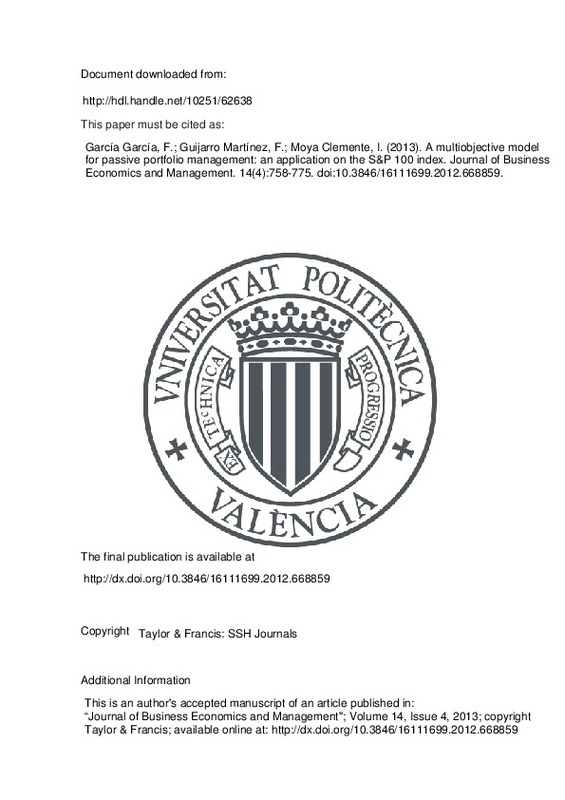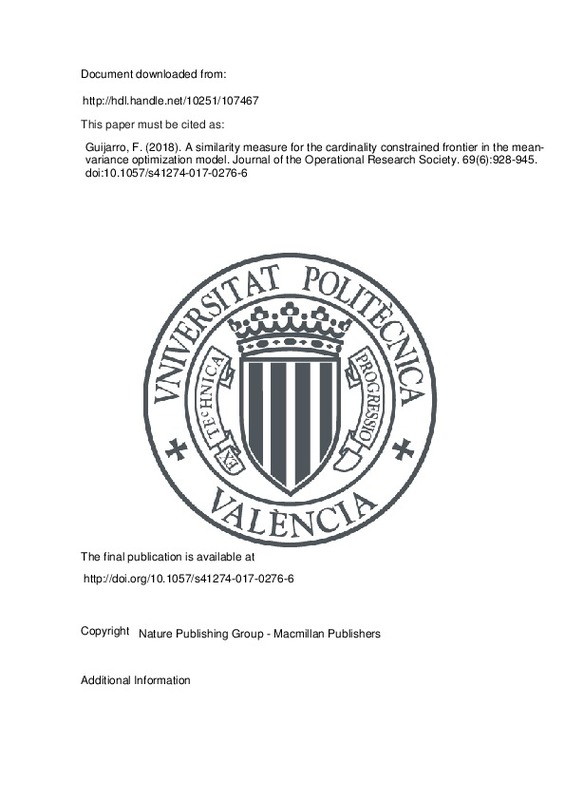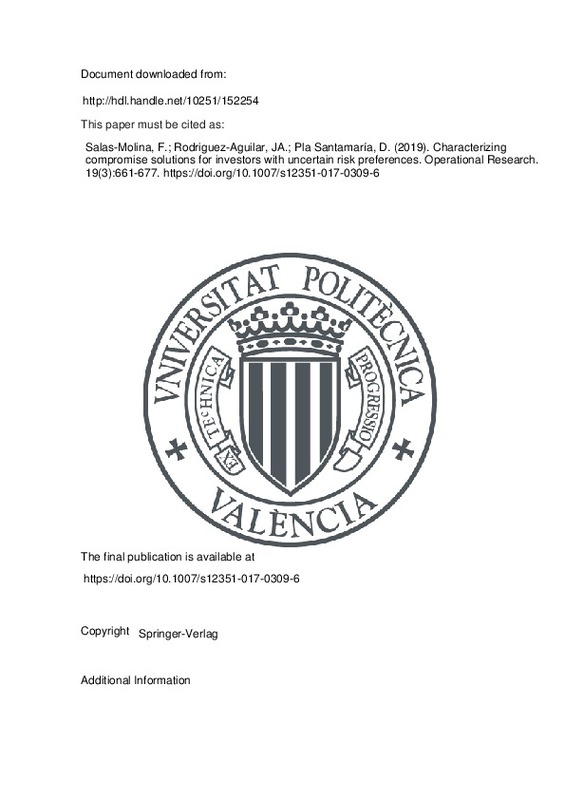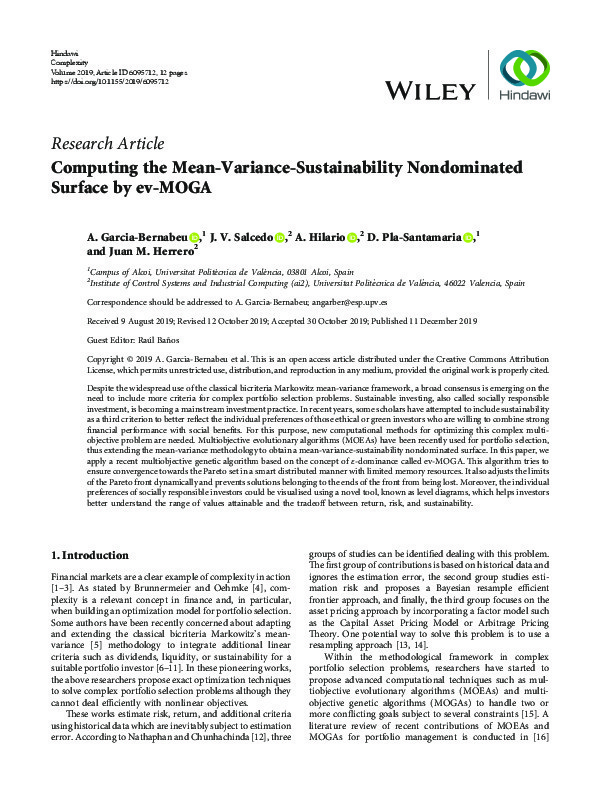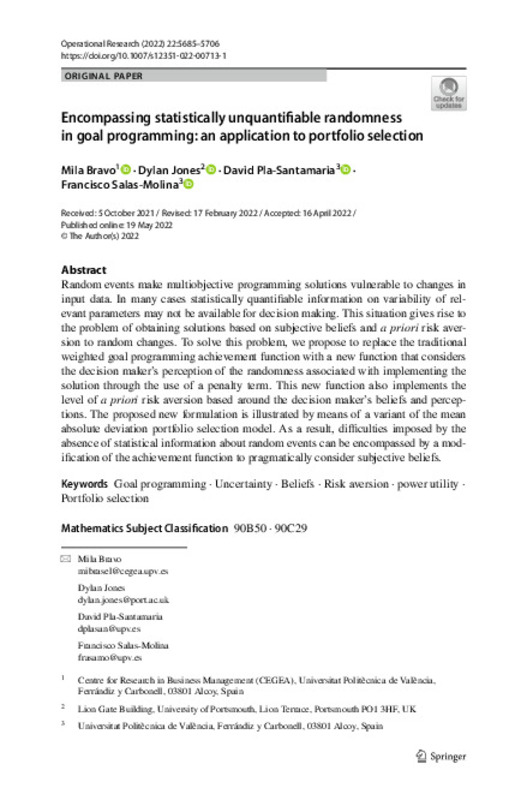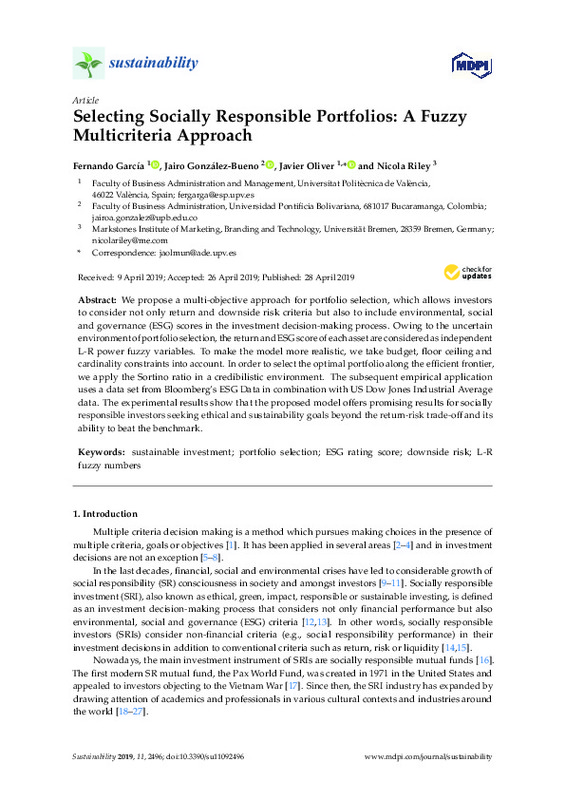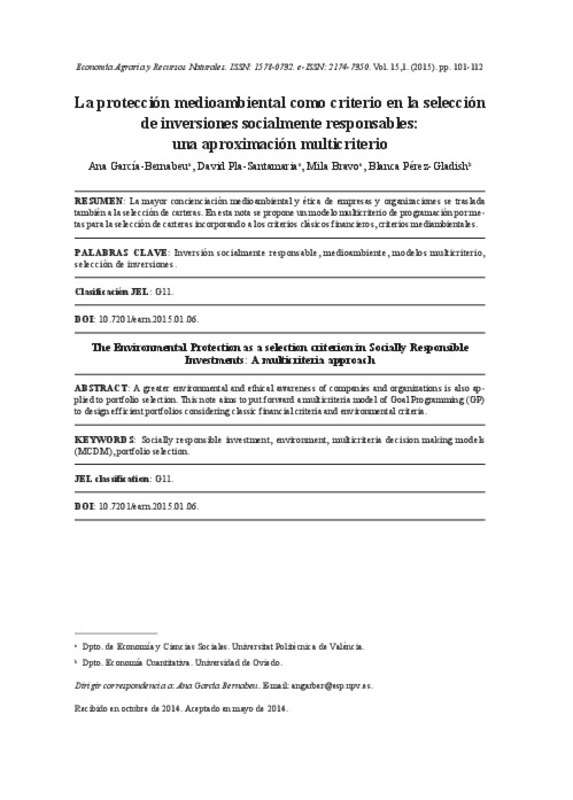

Listar por palabra clave "Portfolio selection"
RiuNet: Repositorio Institucional de la Universidad Politécnica de Valencia
- RiuNet repositorio UPV
- :
- Listar por palabra clave
JavaScript is disabled for your browser. Some features of this site may not work without it.
Buscar en RiuNet
Listar
Mi cuenta
Ayuda RiuNet
Admin. UPV
Listar por palabra clave "Portfolio selection"
Mostrando ítems 1-14 de 14
-
García García, Fernando; Guijarro Martínez, Francisco; Moya Clemente, Ismael (Taylor & Francis: SSH Journals, 2013)Index tracking seeks to minimize the unsystematic risk component by imitating the movements of a reference index. Partial index tracking only considers a subset of the stocks in the index, enabling a substantial cost ...
-
Guijarro, Francisco (Nature Publishing Group - Macmillan Publishers, 2018)[EN] This paper proposes a new measure to find the cardinality constrained frontier in the meanvariance portfolio optimization problem. In previous research, assets belonging to the cardinality constrained portfolio change ...
-
Salas-Molina, Francisco; Rodriguez-Aguilar, Juan A.; Pla Santamaría, David (Springer-Verlag, 2019-09)[EN] The optimum portfolio selection for an investor with particular preferences was proven to lie on the normalized efficient frontier between two bounds defined by the Ballestero (1998) bounding theorem. A deeper ...
-
Garcia-Bernabeu, Ana; Salcedo-Romero-de-Ávila, José-Vicente; Hilario Caballero, Adolfo; Pla Santamaría, David; Herrero Durá, Juan Manuel (John Wiley & Sons, 2019-12-11)[EN] Despite the widespread use of the classical bicriteria Markowitz mean-variance framework, a broad consensus is emerging on the need to include more criteria for complex portfolio selection problems. Sustainable ...
-
Hortal Segura, Enrique (Universitat Politècnica de València, 2019-07-03)[ES] El presente TFG se desarrolla en una empresa multinacional con presencia en 18 países especializada en dar soluciones de desarrollo y mantenimiento de aplicaciones tecnológicas, subcontratación y estrategia. Consistirá ...
-
BRAVO SELLES, MILAGROS; Jones, Dylan; Pla Santamaría, David; Salas-Molina, Francisco (Springer-Verlag, 2022-11)[EN] Random events make multiobjective programming solutions vulnerable to changes in input data. In many cases statistically quantifiable information on variability of relevant parameters may not be available for decision ...
-
Garcia-Bernabeu, Ana; Hilario Caballero, Adolfo; Tardella, Fabio; Pla Santamaría, David (Elsevier, 2024-06)[EN] We present a framework for multi-objective optimization where the classical mean-variance portfolio model is extended to integrate the environmental, social and governance (ESG) criteria on the same playing field as ...
-
Baixauli-Soler, J. Samuel; Alfaro-Cid, Eva; Fernández-Blanco, Matilde O. (Springer Verlag (Germany), 2011-02)[EN] This paper is concerned with asset allocation under real constraints when VaR is the risk measure to minimize. Our paper makes a contribution in several ways, we use a risk measure that is not linear programming ...
-
Alfaro Cid, Eva; Baixauli-Soler, J. Samuel; Fernández-Blanco, Matilde O. (Inderscience, 2011)[EN] In this paper, we develop a general framework for market risk optimisation that focuses on VaR. The reason for this choice is the complexity and problems associated with risk return optimisation (non-convex and ...
-
Ballestero, Enrique; García Bernabeu, Ana María (University of Toronto Press, 2013)Standard approaches to portfolio selection from classical Markowitz mean-variance model require using a time horizon of historical returns over a period that the investor defines in a conventional way. To avoid arbitrary ...
-
García García, Fernando; Gonzalez-Bueno, Jairo; Oliver-Muncharaz, Javier; Riley, Nicola (MDPI AG, 2019-05-01)[EN] We propose a multi-objective approach for portfolio selection, which allows investors to consider not only return and downside risk criteria but also to include environmental, social and governance (ESG) scores in the ...
-
Ballestero Pareja, Enrique; Bravo Sellés, Milagros; Perez-Gladish, Blanca; Arenas-Parra, Mar; Pla Santamaría, David (Elsevier, 2012-01-16)In a context of Socially Responsible Investment (SRI), this paper deals with portfolio selection for investors interested in ethical policies. In the opportunity set there are ethical assets and other assets which are not ...
-
García García, Fernando; Guijarro Martínez, Francisco; Moya Clemente, Ismael (Elsevier, 2011-10)Index tracking aims to select portfolios that imitate the behavior of a stock index. A tracking strategy is referred to as partial when the tracking portfolio is solely formed by a subset of stocks, so enabling a substantial ...
-
García-Bernabeu, Ana; Pla-Santamaria, David; Bravo Sellés, Milagros; Pérez-Gladish, Blanca (Universitat Politècnica de València, 2015-06-26)[EN] A greater environmental and ethical awareness of companies and organizations is also ap-plied to portfolio selection. This note aims to put forward a multicriteria model of Goal Programming (GP) to design efficient ...
Mostrando ítems 1-14 de 14

Universitat Politècnica de València. Unidad de Documentación Científica de la Biblioteca (+34) 96 387 70 85 · RiuNet@bib.upv.es


